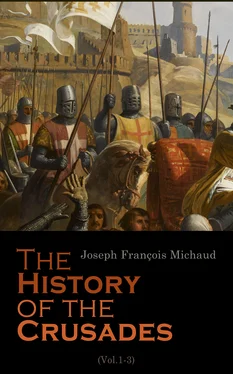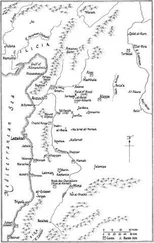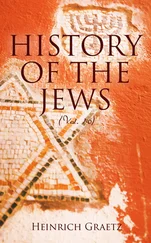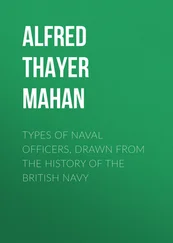The princes and knights bore upon their shields figures or signs of different colours, which served as rallying-points for their soldiers. Here might be seen, painted on the bucklers and standards, leopards and lions; there, stars, towers, crosses, Asiatic trees, and European trees. Several caused to be represented on their shields the birds of passage which they had met with on their route, which birds, by changing their climate annually, presented to the Crusaders a symbol of their own pilgrimage. These distinctive marks at the time served to animate their valour in the field of battle, and were destined, at a future day, to be one of the attributes of rank among the nations of the West.
In the immense crowd of Crusaders, no count, no prince, deigned to receive orders from any one. [74]The Christians presented the image of a republic under arms. This republic, in which everything appeared to be in common, recognised no other law but that of honour, no other tie but that of religion. So great was their zeal, that chiefs performed the duties of common men, and the latter required no signal to rush to victory or encounter death. The priests passed continually amongst the ranks, to recall to the Crusaders the maxims of scriptural morality. Their discourses were not thrown away; for, if we may credit contemporary authors, who seldom spare the champions of the cross, the conduct of the Christians during the siege of Nice offered nothing but examples of warlike virtue and subjects of edification.
In the first days of the siege the Christians made several assaults, in which they uselessly displayed prodigies of valour. Kilidge-Arslan, who had placed both his family and his treasures in Nice, animated the garrison by his letters, and resolved to spare no efforts to succour the besieged. He called together the chiefs of his army; he reminded them of the advantages they had gained over the Christians, and predicted still more brilliant trophies to their valour. “The greatest disorder,” he told them, “reigned in the Christian army, and the numbers of their enemies assured them the victory. They were going to fight for their wives, their children, and the country which they owed to the conquests of their fathers; the religion of the prophet implored their help, and the richest booty would be the reward of their exploits.” The Mussulmans, animated by the speeches and the example of their chief, prepared for battle, and descended the mountains. Their army, divided into two bodies, attacked with impetuosity the quarter of Godfrey de Bouillon and that of Raymond de Thoulouse, who had just arrived before Nice. The Provençals were not able to resist the first shock, but they rallied soon at the voices of Raymond and Adhémar. “Then the two armies,” says Matthew of Edessa, [75]who speaks of this battle, “joined, mingled, and attacked each other, with equal fury. Everywhere glittered casques and shields; lances rung against cuirasses; the air resounded with piercing cries; the terrified horses recoiled at the din of arms and the hissing of arrows; the earth trembled beneath the tread of the combatants, and the plain was for a vast space bristling with javelins.” Godfrey, Tancred, and the two Roberts, appeared to be everywhere at once, and carried death and terror into the ranks of the infidels. The Turks could not long withstand the impetuous valour of the Crusaders; they were put to the rout, and pursued by the conquerors even to the mountains which served them as a place of refuge.
The sultan, instead of deploring his defeat, only thought of avenging the disgrace of his arms, and on the very morrow, at break of day, led back his troops to the combat. The Turks attacked the Christians, uttering loud cries. Sometimes they rushed with fury into the ranks of the Crusaders, sometimes they fought at a distance, pouring in showers of arrows. Then they feigned to fly, only to return to the charge with greater fury. This second battle, in which the Turks showed the courage of despair seconded by all the stratagems of war, lasted from morning till night. The victory, which was for a long time doubtful, cost the Christians two thousand lives. The Crusaders made a great many prisoners; four thousand Mussulmans fell on the field of battle; the heads of a thousand were sent to Alexius; and the rest, by the aid of machines, were cast into the city, to inform the garrison of this fresh defeat of the Turks.
Kilidge-Arslan, despairing to save Nice, retired with the wreck of his army, and hastened to gather together in the provinces new forces, with which to oppose the Christians. The Crusaders, having no longer to dread the neighbourhood of an enemy’s army, pushed on the siege with vigour. Sometimes they made approaches by galleries covered by a double roof of boards and hurdles; sometimes they dragged towards the walls towers mounted on a number of wheels, constructed with several stages, and loaded with arms and soldiers. Here the rams beat against the walls with redoubled shocks; at a short distance balistas vomited, without ceasing, beams of wood and showers of arrows; and catapultas cast into the air combustible matters and enormous stones, which fell with a crash into the city.
The Christians employed in this siege all the machines [76]known to the Romans. The Greeks were better acquainted with the construction of them than the Latins, and directed their operations. It is likewise probable that the Greeks who were in Nice, and subject to the power of the Mussulmans, instructed the latter in the means of defending the place.
The Christians allowed the besieged no respite, and they defended themselves with obstinate fury. All the inhabitants of Nice had taken arms. Their ramparts were covered with formidable machines, which hurled destruction among the assailants. Fiery darts, beams, enormous pieces of stone, launched from the height of the walls, destroyed, day after day, the labours of the Crusaders. When the Christians had made a breach in the ramparts, another wall arose from the bosom of the ruins, and presented a new barrier to the besiegers.
As the Crusaders attacked without order or precaution, their imprudence and their rashness were often very fatal to them. Some were crushed beneath the fragments of their own machines; others fell pierced with poisoned darts; sometimes, even, says an historian, the besiegers sported with their efforts, catching them with iron hands , [77]or hooks, which, falling upon them, seized them, and lifted them alive into the city. After having stripped them, the Turks hung them upon their ramparts, and then launched them, by means of their machines, stark naked into the camp of the Christians.
A Saracen, [78]whom history describes to us as a giant, performed during this siege exploits which surpass those related of fabulous antiquity. He was not less remarkable for his skill than for the strength of his arm; he never cast a javelin in vain, and all whom he hit were sure to sink beneath the blow. When he had exhausted his arrows, and could make no more use of his bow, he seized masses of rock, and rolled them down upon the assailants. One day, when he was standing on the platform of a tower attacked by Raymond, he alone defied the efforts of the enemies. At one time he hurled a shower of stones upon the besiegers; then, raising his voice, he defied the bravest of the Christians to the combat, loading them with the most violent abuse. All eyes were turned towards him, and a thousand arrows flew at once from the Christian army to punish his audacity. For a moment all the efforts of the besiegers were directed against a single man. His body was covered with wounds and bristling with arrows; but he defended himself skilfully, and was still braving the crowd of his enemies, when Godfrey, attracted by the noise of this general attack, seized a cross-bow, and taking aim at the redoubtable Saracen, shot him through the heart, and his immense body rolled from the platform into the ditch.
Читать дальше












